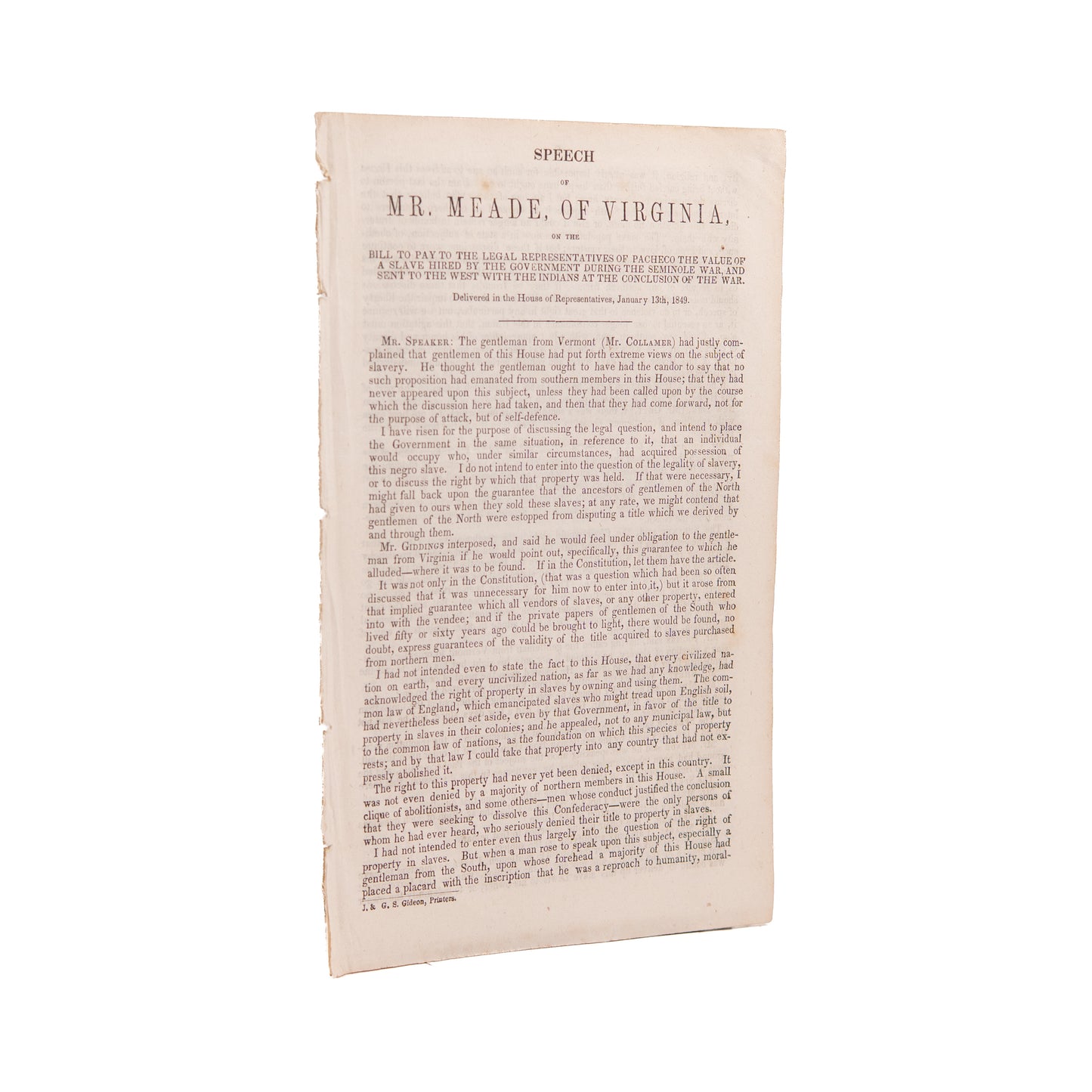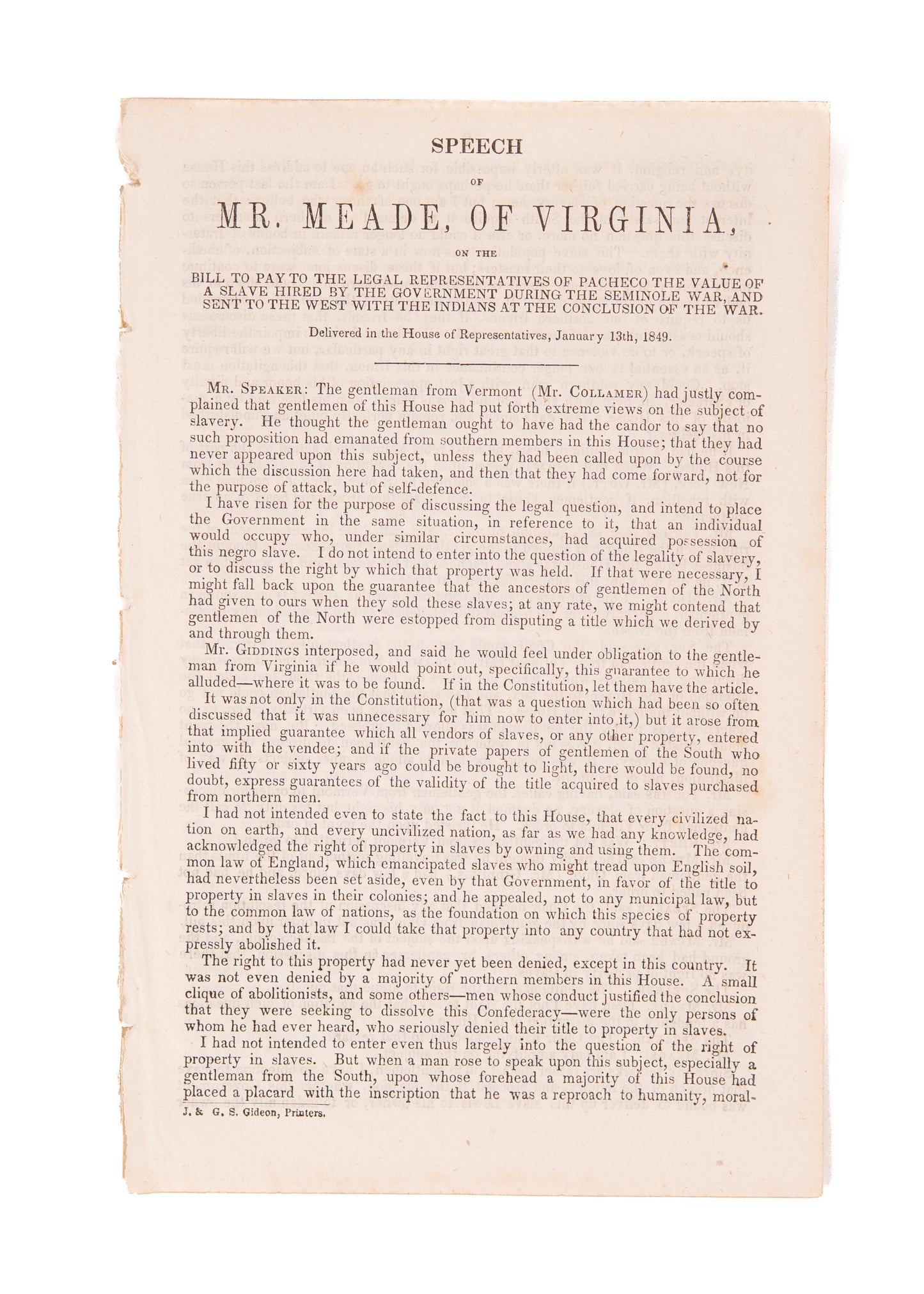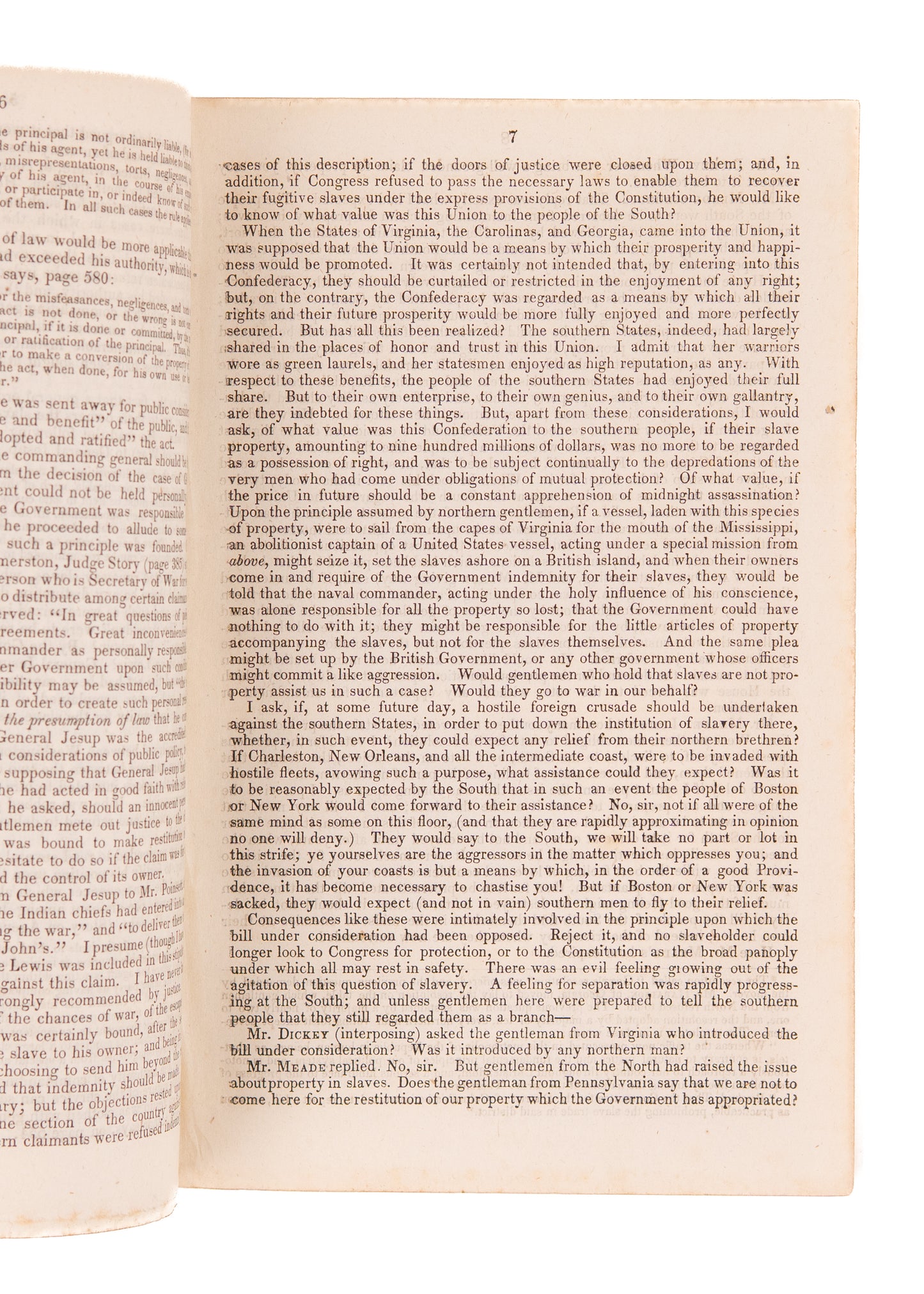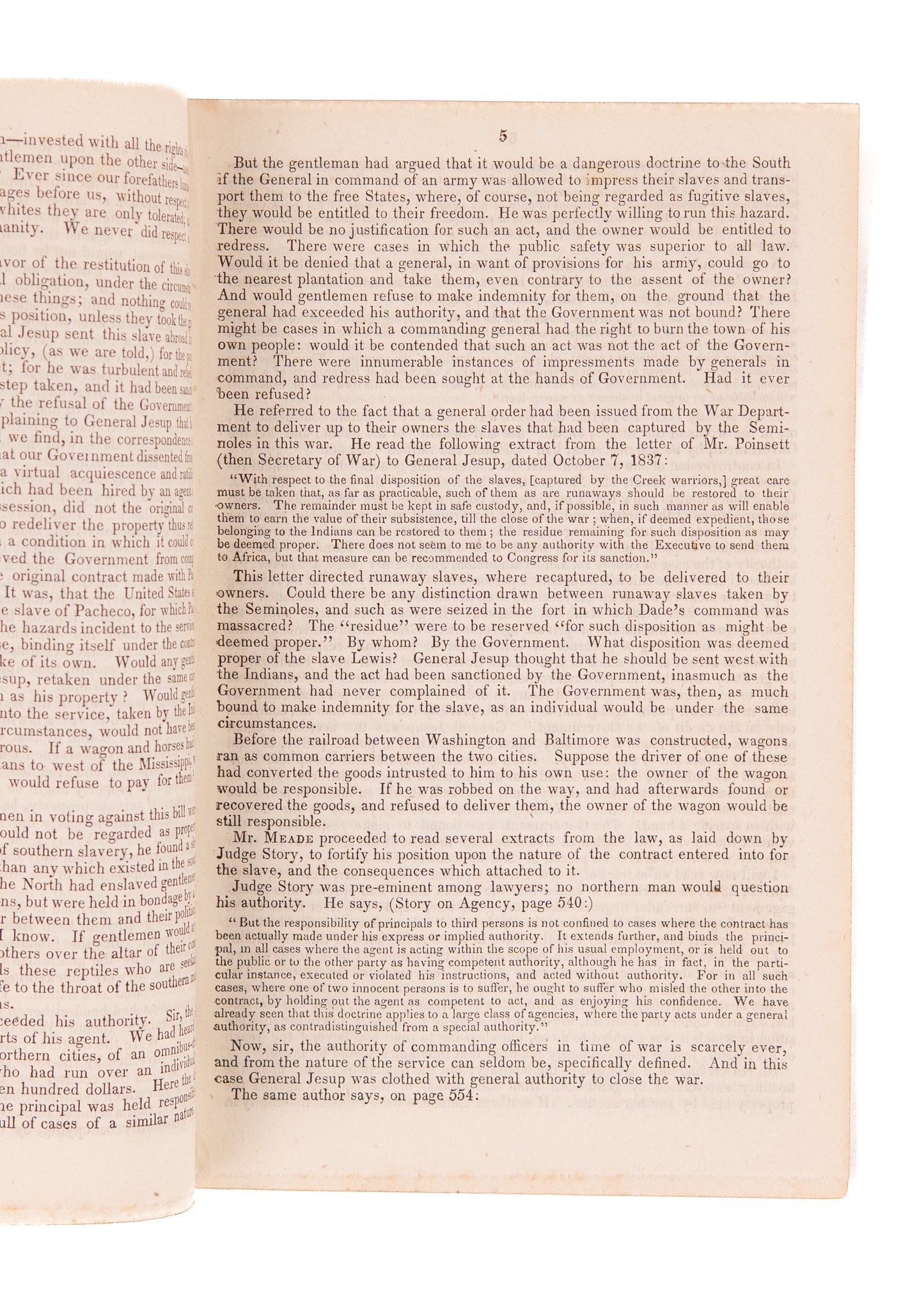Specs Fine Books
1849 BLACK SEMINOLE SLAVE. Slave Owner Sues Government for Payment for Seminole Slave Interpreter.
1849 BLACK SEMINOLE SLAVE. Slave Owner Sues Government for Payment for Seminole Slave Interpreter.
Couldn't load pickup availability
An absolutely fascinating document in which the slave owner of the famed Pacheco sues the Federal Government for the lease and loss of his slave during the Dade Massacre of 1849.
Luis Pacheco remains one of the most fascinating persons of the era. Born in 1800 on a New Switzerland, Georgia plantation owned by Francis Philip Fatio, Pacheco's father was a highly skilled enslaved person whose labor as a carpenter and boat builder were sought regionally.
This gave Pacheco unique access to some degree of formal education. And he was incredibly well suited to it. By adulthood, he was proficient in French, Spanish, and English. He added to these the Seminole language, learned from his brother who had been kidnapped by the Indians and later returned to the plantation.
Still enslaved, in 1821, Luis married another enslaved woman named Ramon Sanchez, who had already been attempting to purchase her freedom. Sometime after their marriage, she was able to pay the 300 pesos and left the plantation. The marriage led to the first significant problems between Luis and the plantation owners. He would frequently leave the Fatio plantation to visit his wife without informing his master of his whereabouts. And in 1824, Luis fled the plantation and began working with the Spanish fisheries.
He was again captured and returned to Fort Brooke between 1829 and 1831 and sold to Antonio Pacheco, a Cuban businessman, from whom he derived his public name. Following Antonio Pacheco's death, Antonio's wife hired Luis out to the military to serve as an interpreter for the Seminole Indians, leading to the events referenced in the document.
It began with the Dade Massacre. The United States had been attempting to force the Seminoles to move away from their land in Florida and relocate to the Oklahoma Indian Territory. The Seminole’s did not take it well. Instead of capitulating, 180 Seminole Warriors ambushed 110 soldiers under the command of Major Francis L. Dade. Only three U. S. soldiers survived. One of them was Luis, and because of his knowledge of the Seminole language and the general suspicion of sedition among the slaves, he was accused of being party to the Seminole plot.
Among the casualties was Major Dade. It was reported that when he was shot, Pacheco dropped to the ground so swiftly that those around believed he had also been shot, likely in the head. He was however then seen crawling for cover.
After the massacre, he was found by the Seminoles hiding behind a tree. Ironically, it was his enslaved status that saved him. They reportedly reasoned, "He’s a black man, he is not his own master and not one of them." Pacheco repaid his captors by reading the letters and dispatches found on the bodies of dead officers. This gave the Seminoles valuable information pertaining to the military's strategy.
Hethen escaped the Indians and turned himself into the authorities, hoping to clear his name. Unfortunately, the man overseeing Luis's case later just forgot about him and accidentally sent him to New Orleans with other Black Seminoles. Once they arrived in New Orleans, Luis sat in prison for a month before being released. But then, in 1845, Marcellus Duval and his brother were given permission by the Government to recapture all of the Black Seminoles set free in New Orleans, including Luis Pacheco. He remained enslaved to them until 1865, when slavery ended.
This particular document involves the suit against the Government of Antonio Pacheco's widow, who believed the Government owed her because they lost her slave. The case became quite a stir because it overlapped multiple points of public interest, i.e. the "Indian Wars," Slavery, etc., and was significant legistlavily as the primary question of the suit was whether or not Pacheco was "property." If he was, then the suit was clearly in her favor.
At the age of 82, Luis traveled back to Florida to see his former slave owner, the Widow Pachecke. But he arrived to find she had died some time before. He did however meet her daughter, Susan Philippa Fatio L'Engle. She welcomed Luis and he lived with her as a free person and apparently friend until he died at the age of 94 years old.
Richard Kidder Meade (1803 -1862) was Virginia lawyer, plantation owner and pro-Slavery, Confederate politician. He served the Virginia Senate and in the United States House of Representatives, as well as U.S. minister to Brazil under President James Buchanan before returning to Virginia to work for the Confederate States of America during the American Civil War until his death.
He owned a plantation in St. Andrews Parish, Brunswick County, Virginia near Lawrenceville. In the 1820 U.S. Census, this Richard Kidder Meade owned 55 enslaved persons.
Upon the election of President Abraham Lincoln, Meade returned to Virginia and devoted himself to the cause of the Confederacy. His older sons also volunteered as Confederates and served the Rebel cause throughout the Civil War.
Speech of Mr. Meade, of Virginia on the Bill to Pay to the Legal Representatives of Pacheco the Value of a Slave Hired by the Government during the Seminole War, and Sent to the West with the Indians at the Conclusion of the War. Delivered in the House of Representatives, January 13th, 1849. Washington. J. & G. S. Gideon. 14pp.
A generally good, clean copy, removed from a sammelband at some point.
Share








